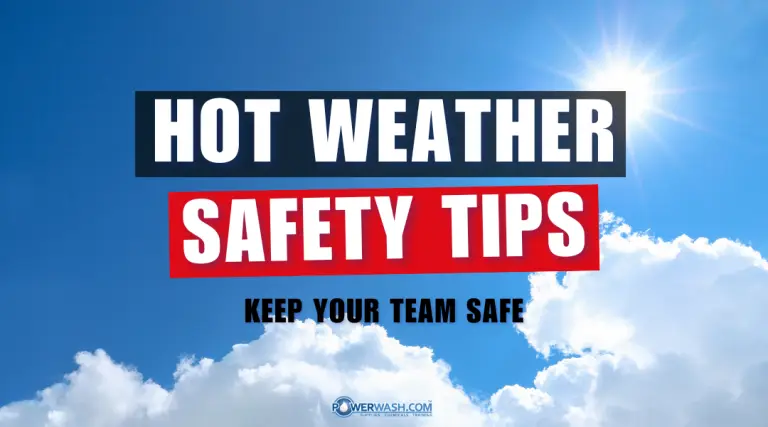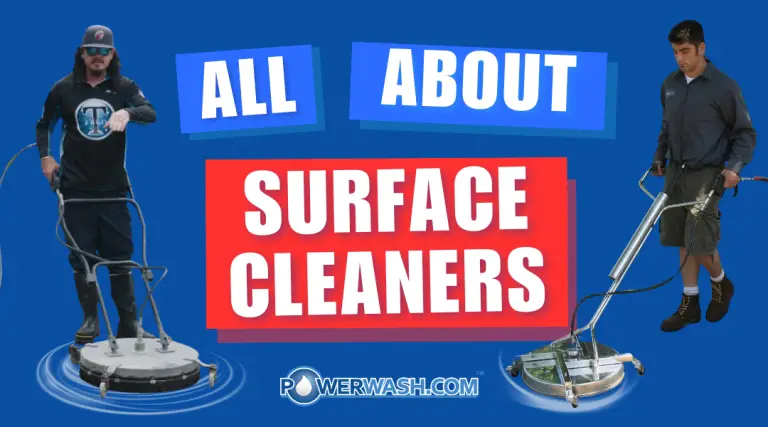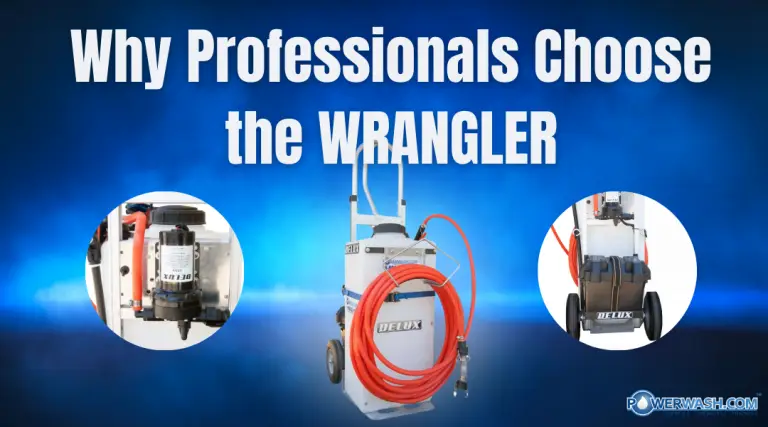- Home
- /
- PowerWash Industry
- /
- Pressure Washer Maintenance Tips for Winter
Subscribe To Our Newsletter
Stay in the know on the latest products, deals, events, tips & tricks.
Social Media
Pressure Washer Maintenance Tips for Winter
DO NOT LET YOUR WASHER FREEZE! If possible, store your pressure washer in a warm place. An enclosed vehicle with insulated walls can help protect your pressure washer from freezing, but you may melt the snow on the roof if you heat the inside. The water may freeze over the doors as it runs down the sides of the vehicle and make it difficult to gain entry.
The best place to store your equipment is inside an insulated garage or workshop. You can prevent your bay doors from freezing by
-
- Changing out steel roller to magnum type rollers.
-
- Installing proper weather stripping around the door.
-
- Making sure the door is well lubricated and serviced.
-
- Insulating the door with Styrofoam panels.
-
- Installing a heater at the threshold of the door.
-
- Keeping only one door open at a time to avoid a creating a wind tunnel.
If you store your vehicle inside of a heated garage short travels of an hour or less can usually be made without the pressure washer freezing.
Your washer will freeze going down the highway with a reported air temperature of 35 degrees Fahrenheit. That is because of the cooler temperatures in low places. Remember that air temperature varies normally 2 to 6 degrees in a given region going up and down high and low places. You can pull open trailer wash rigs with water tanks down the highway in freezing temperatures by putting your wash wand into your 500 gallon water tank and firing up the water heater and recirculating the water as go down the road. Where practicable cover exposed piping with heat tape. If you are only going a short distance or if the temperature is not very cold (like 15 to 20°F) it may not be necessary to turn on the water heater. In this case this procedure will also work for cold water pressure washers connected to water tanks.
Water Tanks can be kept from freezing over night by installing recirculating water pumps to keep the water moving. Drop a small electric water pump (like those used for waterfall displays) with a 3′ hose attached into the water tank. Water in motion will delay the freezing of the water tank. Also small submersible water heaters work good in water tanks for keeping the water above freezing. Install a water filter to clean your water as it is recirculating.
If your washer is going to freeze, the best way to protect your washer is with automotive anti-freeze (Note: Be sure and check the freezing point of the fluid you are using).
-
- Fill up your empty float tank* with anti-freeze then start up your washer and push out the water with anti-freeze, (Note, most hot water pressure washers hold about 5 gallons).
-
- Remove your spray tip from your wand and insert it into the float tank.
-
- Re-circulate the anti-freeze for 2 minutes while turning the trigger gun on and off to force antifreeze into the by-pass line of the unloader. This will protect your pump, coils, hoses and plumbing.
-
- To protect the chemical line, you will need to have another antifreeze bucket on your chemical line.
-
- Use a 5-gallon jug to capture the anti-freeze for reuse. Five gallons of pure antifreeze should last you all winter if you recapture it each time.
*If your unit does not have a float tank, use a 5-gallon bucket. Insert the water intake hose into the bucket and proceed with the steps above. If your machine does not have a float tank, and it is connected to a water tank, you can install a three-way ball valve between the tank and the inlet. Connect a short piece of hose to a 5 gallon bucket to introduce the antifreeze. This way it is not necessary to disconnect the water line from the water tank.
If you suspect that your pressure washer is frozen, proceed with caution. First, disconnect the spark plugs. Then try to rotate your pump by hand to see if it will turn freely. Practice this during warm weather so that you will know what the resistance feels like and you can recognize a frozen pump. Do not turn the burner on until water flow established. Frozen controls may allow the burner to fire without water flow. This could result in a steam explosion. It will take about 12 hours in a heated area to thaw out a frozen pressure washer. Sometimes everything will thaw out and work just fine, but even if everything seems fine you may have a delayed failure. It is important to check everything carefully after a freeze to avoid problems down the road.
If you are going to store your pressure washer for the winter, there are several things you should do to make sure everything starts up okay in the spring.
-
- Antifreeze your pressure washer per instructions above.
-
- Get a fuel stabilizer from an auto parts store and add to the fuel tank to keep your fuel from turning into varnish and having the gaskets in the carburetor go bad.
-
- Remove the spark plug wires; spray WD-40 into the carburetor while turning over the engine to coat everything with oil.
-
- Change the engine oil, oil filter and fuel filter. If you do not change the engine oil the sludge will collect on the bottom of the oil pan and solidify. If there is any water in the fuel filter it may freeze and break.
-
- Top off the Fuel Tank to keep moisture from condensing inside the fuel tank. This will cause rusting of steel fuel tanks and water in the fuel.
-
- Disconnect the battery to avoid a trickle discharge.
In the spring put in fresh fuel, replace the spark plugs, and start it up. If it is hard to start spray WD-40 into the carburetor intake the same way you would starting fluid. This gives an easier ignition than starting fluid. De-lime the coils and add “Red Devil Soot Remover” to your Diesel or Kerosene for your burner.
Share This Post
More To Explore
Beat the Heat: Summer Safety Tips for Power Washing Professionals
Protect Your Crew. Protect Your Equipment. Protect Your Business. When the summer sun blazes, pressure washing jobs don’t stop—but the ...
Soft Wash Additive That Smells Amazing? Meet Fresh Wash
Freshen Up Every Wash Soft washing is all about precision, power, and presentation — and nothing completes a job like ...
Mastering the Art of Pressure Washing: Key Insights on Surface Cleaners
For professionals in the pressure washing industry, a surface cleaner is an indispensable tool, particularly for those who specialize in ...
The Wrangler™ Chemical Sprayer: The Ultimate Tool for Professional Cleaning Applications
For commercial cleaners and pressure washing professionals, efficient chemical application is key to achieving the best results. The Wrangler™ Chemical ...









